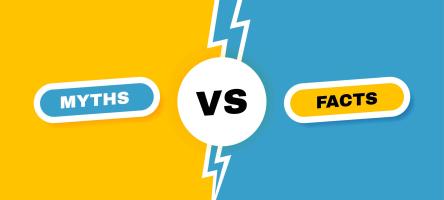There are many assumptions and myths about UDL.
- MYTH: If I follow a checklist, I am practicing UDL.
Fact
In a hectic work environment, UDL is often defaulted to as a “one and done” alteration or a checklist to follow. However, it is meant to be a framework for reflective practice, which is never-ending, organic, and fluid as we consider our current contexts of teaching and learning.
- MYTH: UDL will water down the curriculum and impact academic rigour.
Fact
While the framework recommends flexibility and encourages learners to co-develop the learning experience to foster engagement and agency, it does not ask educators to water down curriculum or change the outcomes of a course. The UDL framework suggests new ways to identify gaps and problems, to provide multiple pathways (engagement, representation, action and expression) to the same learning outcomes, and to test and revise design solutions to learning problems. When you remove barriers to learning, learning is easier!
- MYTH: If I incorporate UDL, there should be no reason for students to need academic accommodations.
Fact
Employing universal design principles to learning experiences does not eliminate the need for specific accommodations for students with disabilities. There will always be the need for some accommodations, such as sign language interpreters for students who are D/deaf. However, applying universal design concepts in course planning will assure access to the content for most students and minimize the need for accommodations. For example, designing digital resources in accessible formats as they are developed means that no re-development is necessary if a blind student enrolls in the class. Planning can be less time-consuming in the long run. Letting all students have access to your class notes and assignments in an accessible digital format can eliminate the need for providing materials in alternative formats.
- MYTH: The UDL framework requires a full overhaul of my course.
Fact
There are likely already many teaching and learning practices that you are employing that overlap with the UDL framework. Take note of the many ways you have intuitively built in inclusive practices which remove barriers for learners. This is often the best place to begin. Slowly over time, consider areas you may not have before. It is true that, in some cases, you will need to do some initial work. However, this will make things more sustainable for both the educator and the learner in the long run. It takes the pressure off grading hundreds of repetitive assignments, gives keys to increasing engagement, and transfers the autonomy of learning to students. It reframes the classroom as a community, shifts the power dynamics, supports feedback, and can make learning more creative and interesting.
- MYTH: UDL is just “good teaching.”
Fact
UDL is an educational framework based on decades of research in learning and the brain. It provides ways of understanding the learner, to define learning problems (barriers), to find pathways for creating innovative solutions and to test and redesign. UDL is a mindset and paradigm shift for educators to consider how curriculum can be designed to meet the needs of the widest range of learners possible.
UDL @ GBC
Discover the evolution of Universal Design for Learning (UDL) at George Brown College. Click to learn about the key milestones, including the creation of the UDL Integration role and the development of the UDL certificate course, which integrates UDL with other equity frameworks and initiatives.

